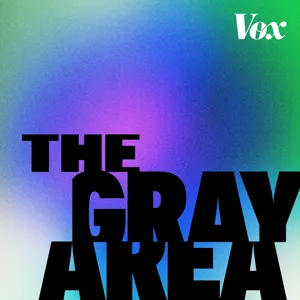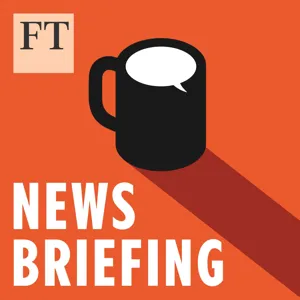Podcast Summary
Entrepreneurs vs. Policymakers: Unique Perspectives on Healthcare Reform: Entrepreneurs focus on system improvements and profit opportunities in healthcare, while policymakers focus on legislative solutions. Successful entrepreneurs like Bill Gurley explore potential innovations and simplify complex financial processes.
Successful entrepreneurs like Bill Gurley, a general partner at Benchmark, approach complex issues, such as healthcare reform, from unique perspectives. While policymakers focus on legislative solutions, entrepreneurs explore opportunities to improve systems and make profits. Gurley, who has invested in various industries including health care, shares his insights on potential innovations in the sector. He also discusses the possibility of democracies and capitalism clashing and the potential for China to lead in healthcare advancements. Mercury, a financial services company, and Wise, a money transfer service, offer simplified solutions to complex financial operations and international currency transactions, respectively. Their approaches demonstrate the power of simplifying complex processes to enhance business performance and personal convenience.
Exploring opportunities for disruption in the healthcare industry: The healthcare industry's complexities and lack of transparency present opportunities for disruption through digital tools and technologies, but understanding the unique challenges is crucial.
The healthcare industry, which makes up a significant portion of the US economy, presents a ripe opportunity for disruption due to its inefficiencies and lack of transparency. The complex nature of the industry, with third-party payers like employers being involved, creates unique challenges that are different from other industries. This lack of price transparency and the self-reinforcing nature of the current system make it an intriguing area for entrepreneurs and investors to explore using digital tools and technologies. The learning journey for those entering this space can be daunting, but resources like David Goldhill's book "Catastrophic Care" can provide valuable insights into the industry's complexities. Ultimately, the potential for innovation and improvement in healthcare through technology is significant, but it requires a deep understanding of the industry's unique challenges.
The Unique Structure of American Healthcare: Neither Free Market Nor Fully Government-Run: The unusual structure of American healthcare, influenced by a post-WW2 tax quirk, has led to debates over whether a more consumer-driven, market-based system or a more effective government-run system would be an improvement
The current structure of American healthcare, which is heavily influenced by a tax quirk from the post-World War 2 era, has led to an unusual system that is neither fully free market nor fully government-run. This has resulted in numerous issues. Some argue that if we hadn't made employers the primary providers of healthcare benefits, we could have a more consumer-driven, market-based system. Others believe that without this halfway measure of health security, we would have a more effective government-run system like those in other countries. David Goldhill, in his work, suggests that the unique attitude towards healthcare as a necessity rather than a normal good might be a reason for the differences in how healthcare evolves in the US compared to other places. Ultimately, there is ongoing debate about whether a consumer-centered healthcare system would be an improvement or not.
Market forces in healthcare: A middle ground with price controls and competition: Market principles can drive down prices and improve quality in healthcare, but finding the right balance is crucial to ensure essential services remain accessible to all
The healthcare system's complexity and the demand for security and reliability can hinder the implementation of consumer-driven initiatives. However, there is potential for a middle ground with price controls and competition. The example of LASIK, an optional and competitive healthcare service, demonstrates how market forces can drive down prices and improve quality. The challenge lies in finding ways to apply these market principles to a larger portion of the healthcare system without leaving essential services out of reach for those who cannot afford them. The potential for restructuring the healthcare system, such as pulling out optional services from the third-party payer model, could lead to more consumer choice and exposure to market forces while maintaining access to necessary care.
Hospitals' Size and Leverage Impact Healthcare Costs: Hospitals growing larger increases their bargaining power, leading to significant price disparities for the same services. Employers can reduce costs by implementing narrow networks, limiting choices to specific providers.
The healthcare industry is characterized by large hospitals and insurance carriers feeding off each other to make the system worse and more expensive. Hospitals are getting bigger to increase their leverage with carriers and employers, resulting in significant price differences for the same services. For instance, an MRI can cost $32,100 at one hospital and $400 at another. This price disparity is not due to better quality but rather the ability to charge higher prices. Employers can help reduce these costs by implementing narrow networks, limiting employee choices to specific healthcare providers or facilities. This could lead to more affordable pricing for patients. Additionally, the decline in individual general practitioners being replaced by larger systems makes it harder for startups to sell directly to them, further consolidating the market. Overall, understanding the dynamics of the healthcare industry and the role of concentration and leverage is crucial for entrepreneurs and consumers alike.
Employers prioritize employee satisfaction over cost reduction: Employers prioritize maintaining competitive benefits packages to attract and retain talent, despite their desire to exit the healthcare cost reduction role
Contrary to popular belief, most employers do not have a strong incentive or desire to drive down healthcare costs at the expense of employee satisfaction. Instead, they prioritize maintaining competitive benefits packages to attract and retain talent. Employers, who have the expertise, negotiating leverage, and size to potentially secure better deals, often do not act in this capacity due to the potential backlash from their workforce. This reluctance to disrupt the status quo is a persistent mystery in the American healthcare system. Employers consistently express a desire to exit the role they play in the healthcare market, but they are hesitant to do so due to the potential negative impact on their employees. This misconception that employers are the primary drivers of cost reduction in the healthcare system is a common one, but based on conversations with benefits providers, it appears to be largely unfounded.
Absence of government role in US healthcare reform: The US healthcare system's reliance on private insurance and employers hinders cost reduction and universal coverage, with little incentive for change from employers and insurers. Government intervention through a single-payer system could help address these issues.
The current healthcare system in the US, which relies heavily on private insurance companies and employers, is not optimally designed to reduce costs or provide universal coverage. The speakers in the discussion suggest that the government's role in pushing for a single-payer system, like in other countries, has been largely absent. Employers and insurance companies have little incentive to drive down costs significantly, as the overall healthcare spending pie continues to grow. Additionally, the speakers mention the example of the $20 billion paid to doctors to implement electronic health records as a misguided attempt to improve the system, which instead led to vendors focusing on collecting government funds rather than improving software. Overall, the discussion highlights the complexities and challenges in reforming the US healthcare system and the need for more government intervention to address these issues.
Healthcare industry challenges and potential change: The Affordable Care Act's high deductible plans may lead to increased competition in the healthcare industry as consumers make decisions based on their own pocket costs, challenging the status quo of hospital consolidation and prioritizing billing and collections over user experience.
The healthcare industry, specifically Electronic Health Records (EHR), faces challenges such as consolidation among large hospital systems and a focus on features that prioritize billing and collections over user experience. The speaker also expressed optimism for potential change in the market due to the Affordable Care Act's high deductible plans, which could lead to increased competition by pushing consumers to make decisions as they pay out-of-pocket costs. However, the speaker noted that the reputation of the Affordable Care Act is that it goes against high deductible plans, when in fact, it allows for them and also pushes towards narrow networks. This shift towards consumers making decisions based on their own pocket costs could lead to interesting competition on the market's edge. Additionally, the speaker mentioned Wyze, an app that simplifies currency conversions, as an example of a successful business model that caters to consumers' needs.
Consumers shifting towards high deductible plans driving change in healthcare: Despite consumer dislike for high deductible plans, they're driving innovation in healthcare with the rise of consumer-focused urgent care facilities.
Consumers in the healthcare marketplace value peace of mind and are not fond of high deductible plans. Despite political rhetoric suggesting otherwise, the Affordable Care Act (Obamacare) and its replacement plans have led to an increase in these types of plans. However, the consumer shift towards high deductible plans has resulted in new innovations in healthcare, such as the rise of urgent care facilities in Dallas, Texas. These facilities offer extended hours, improved consumer focus, and higher satisfaction levels due to better competition in the market. While consumers may not initially prefer high deductible plans, they are driving change towards a more consumer-centric healthcare system. However, ensuring financial stability for those with lower incomes remains a challenge.
Incentivizing high-quality healthcare innovation through individual financial investment: Singapore's market-driven healthcare system, where individuals pay a percentage of their bills based on income, leads to better execution and cheaper care, potentially inspiring cost savings and consumer-focused innovation in the US.
The key to incentivizing high-quality, consumer-focused healthcare innovation may lie in making individuals more financially invested in their own care, as seen in systems like Singapore's, where everyone is a payer. Despite spending significantly less on healthcare than the US, Singapore achieves comparable results in terms of life expectancy and other measures. The reason for this, according to the discussion, is that the market-driven system in Singapore, where individuals pay a percentage of their bills based on their income, leads to better execution and cheaper care. The speakers also suggest that flexible spending accounts, which allow individuals to use pre-tax dollars for healthcare expenses, could be a middle ground approach to achieving both cost savings and consumer-focused innovation. The discussion also touched on the potential for studying the Singaporean system further to understand how such significant cost savings can be achieved.
Singapore's Unique Health Care Financing Approach: Singapore's health care system combines mandatory savings and government price regulation to keep costs low while exposing citizens to some costs, offering potential benefits for the US but requiring careful consideration and adaptation
Singapore's health care system, often praised by conservatives, is unique in its approach to health care financing. The government mandates a compulsory savings account for health care, similar to a health savings account and Social Security payroll tax. However, unlike the U.S., the government also heavily regulates prices and supply to keep costs down. This results in a system where the average Singaporean is exposed to costs and has a reason to shop, but with much lower costs overall. The challenge for implementing such a system in the U.S. lies in the risk-averse nature of people when it comes to health care, as they fear changes to their care and providers. Despite the potential benefits of learning from Singapore's approach, there's a need for careful consideration and adaptation to the unique context and culture of the U.S. health care system.
Regulations in healthcare hinder innovation: Democracy and capitalism can limit healthcare innovation due to heavy regulations, but less regulated markets like China show promise for disruption
While there may be opportunities for disruption in certain industries like social networks and ride sharing, the heavily regulated nature of industries such as healthcare makes it difficult for new entrants to make significant changes. The incumbents often write the rules, leading to a lack of innovation and progress. However, countries like China, which have non-democratic capitalistic societies and less regulation, may see more innovation and disruption in healthcare. The theory is that democracy and capitalism may ultimately destroy each other, as industries become more regulated and incumbents seek to protect their interests. For instance, regulations like HIPAA, intended to protect consumers, can actually hinder communication and collaboration between healthcare professionals. Despite these challenges, there are signs of innovation happening in less regulated markets, such as telemedicine and second opinion services.
Navigating healthcare regulations and systems as an entrepreneur: Despite challenges like HIPAA and reluctance to integrate, entrepreneurs can improve communication and efficiency within healthcare systems. Focus on areas of value addition and be aware of unintended consequences.
While there are opportunities for entrepreneurs in the healthcare sector, navigating the complex web of regulations and established systems can be challenging. HIPAA regulations and the reluctance of large healthcare systems like Epic to integrate with new technologies are major barriers. However, entrepreneurs should not be discouraged entirely, as there are opportunities to improve communication and efficiency within the system without disrupting it entirely. One example given was a startup that aimed to improve communication between hospitals and rehabilitation centers but ended up helping hospitals maximize their reimbursement instead. It's essential for entrepreneurs to be aware of the potential unintended consequences of their innovations and to focus on areas where they can add value without being pulled into the existing system.
Investing in healthcare startups: A focus on improving the consumer experience: Anne Wojcicki discusses her investment in healthcare startups like One Medical and Solve, which address the consumerization trend by offering better service, transparency, and competition in healthcare.
There is a growing trend towards the consumerization of healthcare, with consumers demanding more convenience and better service. Anne Wojcicki, from 23andMe, shares her experience of investing in healthcare startups and observing the challenges that arise when trying to make a profit within the complex healthcare system. She emphasizes her desire to be part of initiatives that improve the situation rather than making it worse. Two examples of companies addressing this trend are One Medical and Solve. One Medical is a premises-based healthcare provider that offers better service through convenient locations, 24-hour appointment policies, and quick email responses. Although it requires additional payments, it caters to consumers willing to pay for improved healthcare experiences. Solve, a newer investment, focuses on urgent care facilities and aims to create a marketplace with full price transparency, curated providers, and consumer-friendly features such as wait-time measurement and check-in ahead of time. This approach is more accessible to a broader audience, including those with high deductibles. Both companies represent efforts to enhance the healthcare consumer experience by focusing on convenience, transparency, and competition.
Consumer-centric healthcare: New players and technology driving change: New players like One Medical and telemedicine providers offer convenience but potentially higher costs, challenging traditional healthcare models. Technology advancements, such as wearable devices, improve accessibility and affordability through personalized care and early disease detection.
The healthcare industry is witnessing a shift towards consumer-centric, convenient, and cost-effective solutions, driven by the increasing popularity of high deductible plans and the emergence of new providers. These new players, such as One Medical and telemedicine providers, are offering added convenience at potentially higher costs, challenging the traditional healthcare model. The cultural shift towards convenience, as seen in other industries like food delivery and restaurant reservations, is also contributing to this trend. Additionally, advancements in technology, such as wearable devices, have the potential to revolutionize healthcare by improving medication adherence and early disease detection. Overall, these changes reflect a growing demand for more personalized, accessible, and affordable healthcare options.
Navigating Complexities of Integrating Tech into US Healthcare: Startups face challenges in securing reimbursement for tech solutions in US healthcare, exploring alternative routes to market, and looking to books like 'Catastrophic Care' and 'Singapore: Myth or Miracle?' for insights, while 'Startup' and 'Crossing the Chasm' provide essential lessons for entrepreneurs.
While technological advancements hold great promise for improving healthcare and reducing costs, there are significant challenges in integrating these solutions into the existing US healthcare system. Many startups are trying to navigate these complexities by targeting specific conditions like cardiovascular issues or diabetes and exploring alternative routes to market, such as selling directly to self-insured employers or trying to make digital solutions billable. However, the ability to secure reimbursement for these technologies is uncertain and may hinge on regulatory changes. As for recommended reading, "Catastrophic Care" by Donald Goldberg offers valuable insights into the healthcare industry, while "Singapore: Myth or Miracle?" by Jeremy Lin provides a non-American perspective on healthcare. For entrepreneurs, "Startup" by Jerry Kaplan and "Crossing the Chasm" by Geoffrey Moore are essential reads, providing lessons on why startups can disrupt established industries and how to navigate the challenges of bringing new technologies to market. Phil Knight's "Shoe Dog" is another highly recommended book, offering a candid look at building a successful business.






